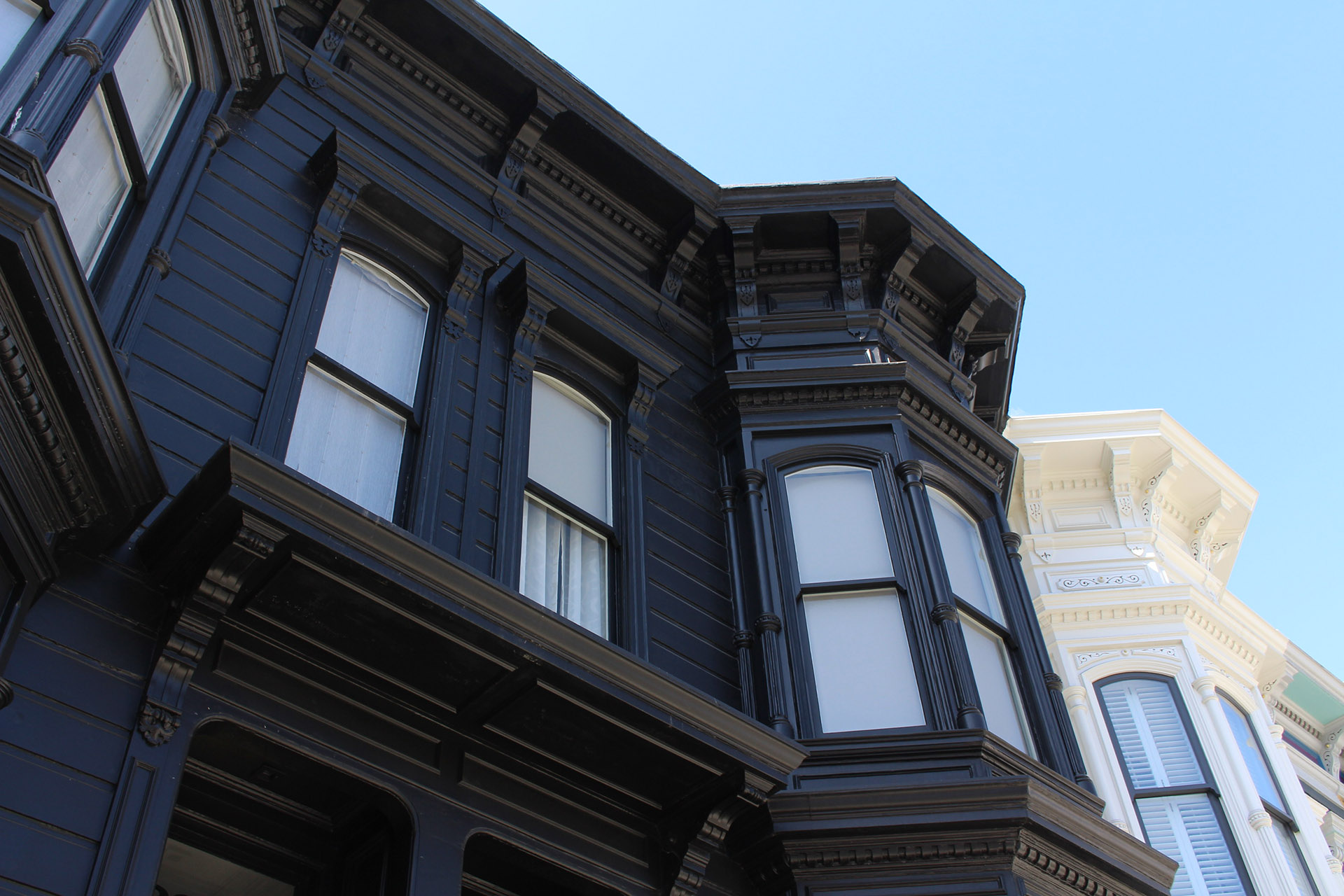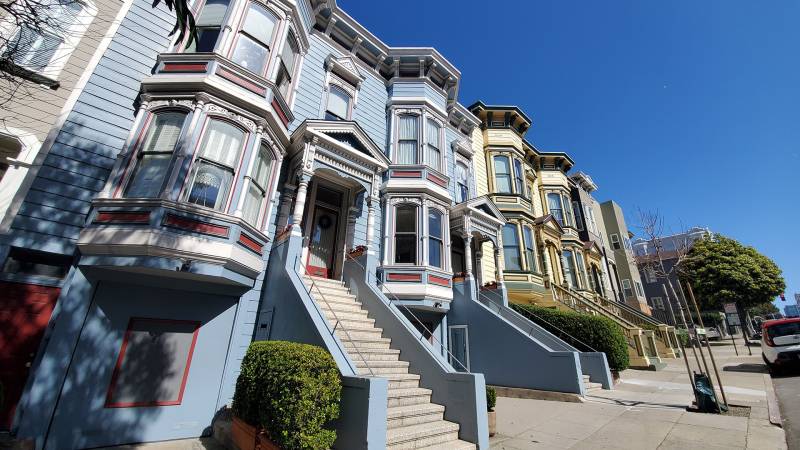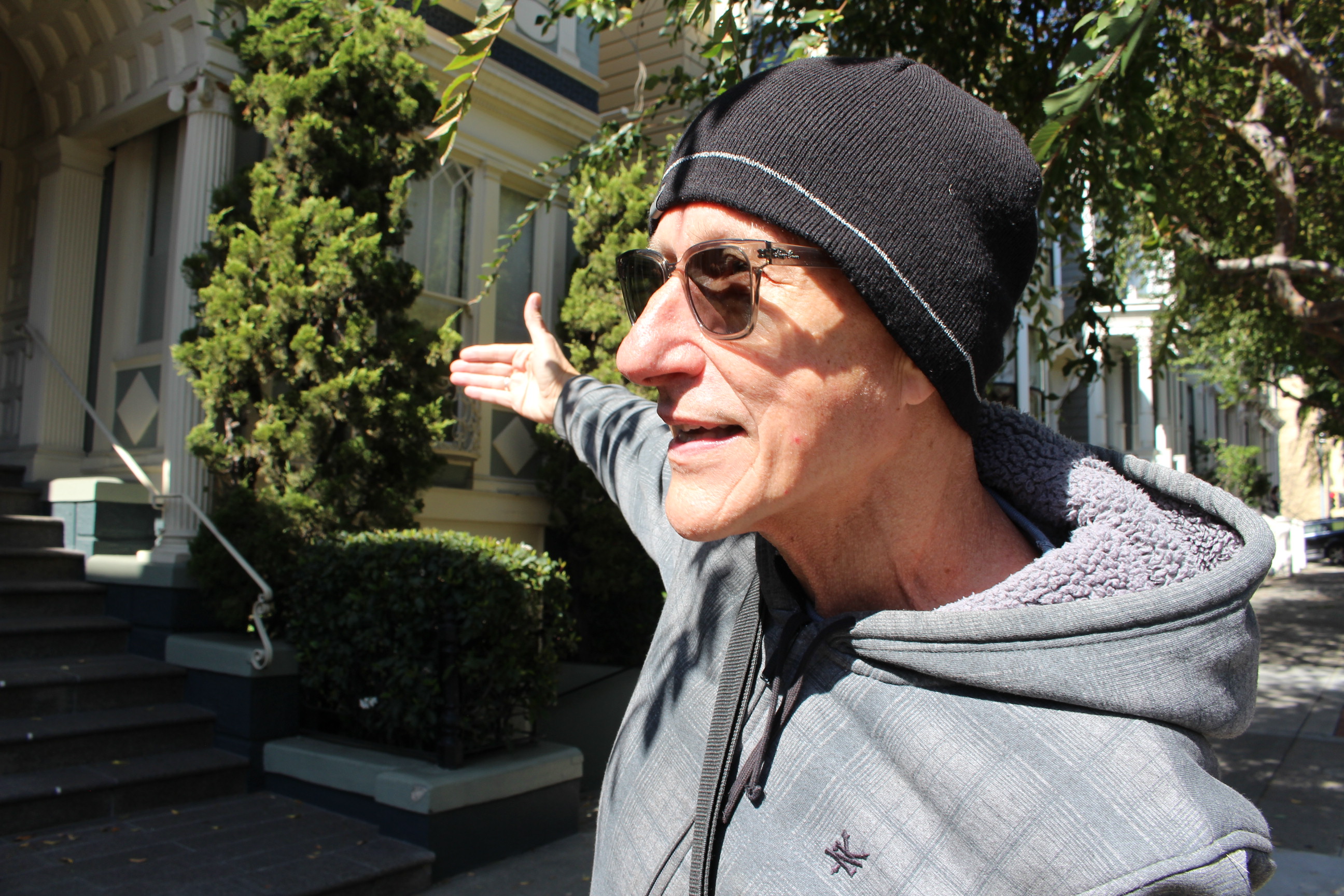T
here are so many bay windows in San Francisco, Oakland and other cities around the Bay Area, it would be easy to assume they were invented here.
But were they?
Bay Curious listener Ayran Michaels wants to know, “Why are bay windows such a prominent architectural style here in the Bay Area?”
To answer this, we need to go back in time.
Where Do Bay Windows Come From?
The bay window has its roots in the 17th and 18th centuries. An architectural feature called an oriel, began to appear on the homes of British elite.
An oriel looks like a large stone bay window. It’s “…basically a three-sided or four-sided appendage to a building that cantilevers out over the ground beneath,” said Christopher VerPlanck, an independent architectural historian in San Francisco.
Although the oriel started out as an embellishment on British manor houses — residents would often put a chapel or throne in them — the feature ultimately made its way into urban housing as well. Many working-class Brits live in what’s called terrace housing: identical homes built close together. These row houses were made of brick and were packed together so tightly that there were only two outward-facing walls. One at the front, and one at the back.
“If you have limited space to put the windows in the front of the house, if you’ve got a three-sided bay window, it lets a lot more light into the interior of the house,” said VerPlanck.

When Europeans immigrated to the East Coast of what became the United States, they brought the bay window with them. Dense cities like Boston, New York and others along the eastern seaboard all have bay windows because of this connection.
So, if the bay window came from Britain and then New England, how did it become so closely associated with San Francisco?

